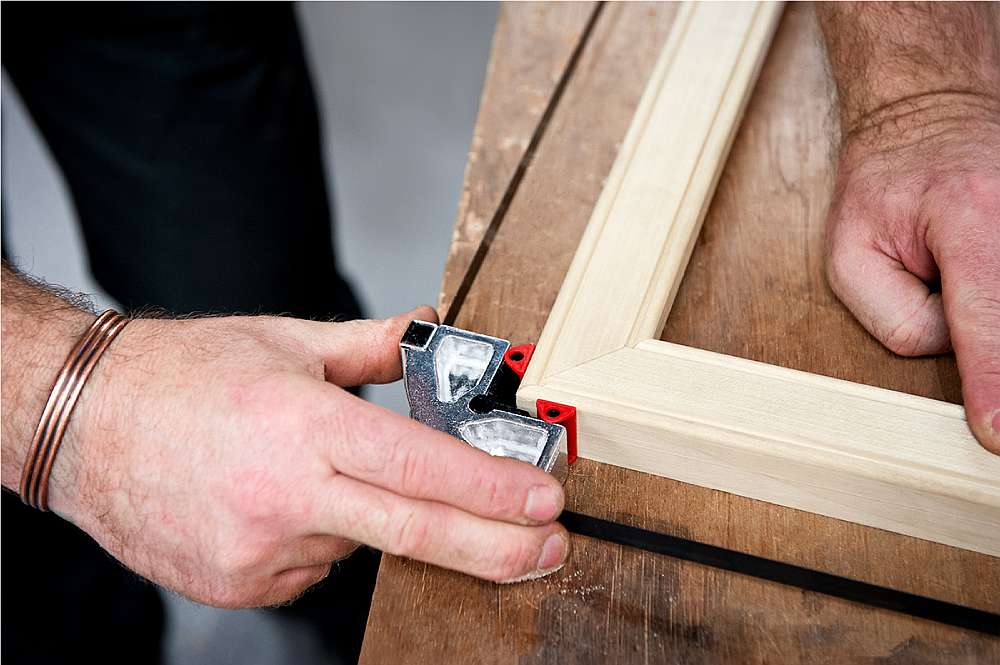Step-by-step frame production

With the right tools and a little woodworking know-how, making a square frame has never been easier.
Also needed: Frame moulding, backboard, pencil, wood for support blocks

Step One
Make a support block to the exact height of the underside of the moulding, this will support the wood when being cut and prevent damage.
Step Two
Measure the picture you’re framing including any mount or surround. Take the frame size, plus double the moulding width and a little bit extra, then cut your four sides to size. Mark out onto the wood moulding and cut down roughly to size. This will make it easier.
Step Three
Start with the top piece of your frame. Turn your piece of wood over and measure the width of the recess, and jot it down. Measure your mount and remove two times the width of the rebate from this length (allowing for a rebate on each side). Transfer this measurement onto the piece of wood, working out from the centre to ensure clean corners. Your mark should be small and will be where the inside of the mitred corner begins. Repeat for all four pieces of wood.
Step Four
Using a 45° mitre square mark out the mitre cuts, working outwards from your small marks. Don’t forget to make sure the angle directions match up on each corner!

Step Five
Using a mitre saw secured to the workbench, (we have chosen the Champion mitre saw for its accuracy) set the angle to 45°. Place the pre-cut support block under the rebate of the moulding, cut the first mitred corner with the moulding face up.

Step Six
Cut one longer length and one short length first, you will then be able to line up the remaining sides more easily to make sure the alignment is still accurate, then cut the remaining sides.

Step Seven
Line up each corner. Using a frame clamp, run the clamp around the square carcass (ideally the Fachmann clamp for larger frames or the Hobby clamp for smaller ones), placing the brackets on each corner. Before tightening up, adjust each corner to ensure they’re square.
TIP – If the corners are not lining up accurately in the clamp, instead of moving the wood, wiggle the clamp corners to bring them in.

Step Eight
Remove the clamp after dry testing. Place a thin layer of glue on one side of the mitre (we’ve chosen Titebond II), line up each corner and re-apply the frame clamp, place the brackets back into position and tighten up the frame. When tightening up the clamp, wind the thread back towards the clamp to gain more tension on a flat surface.
Keep your frame clamped for at least 24 hours to ensure a strong hold.

Step Nine
While the frame is still securely clamped, turn it over and secure the structure with a staple. Before applying the stamp, make sure it's not too long. If you have V nails, you can apply them using your Vee nail insertion tool and push them into the frame. If you're using hardwood, such as oak, you can carefully use a mallet for additional force.

Step Ten
After the glue is set, remove the frame clamp. The frame is now ready to take a glaziers to fit the glass. Finish by placing a backboard on the back of the carcass, cutting to size if required and use frame points to secure in place. Frame Point is a small flex tab that inserts into the back of a picture frame to hold the glass, picture and backing board in place securely.
More tools and jigs to help you frame are located in the Clamps & Vises, Benches section.

Back to what's new